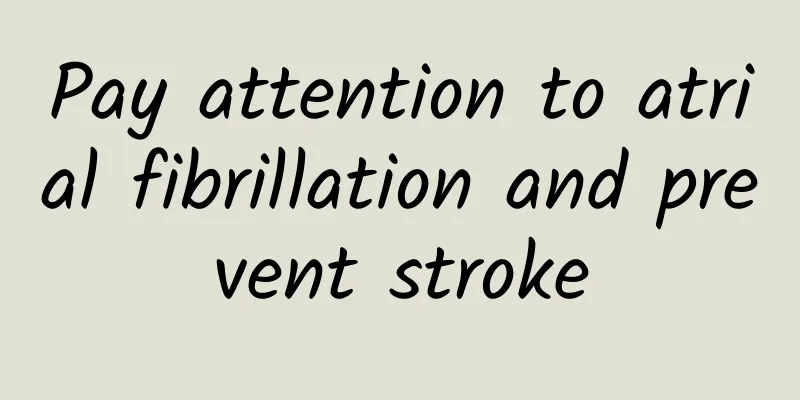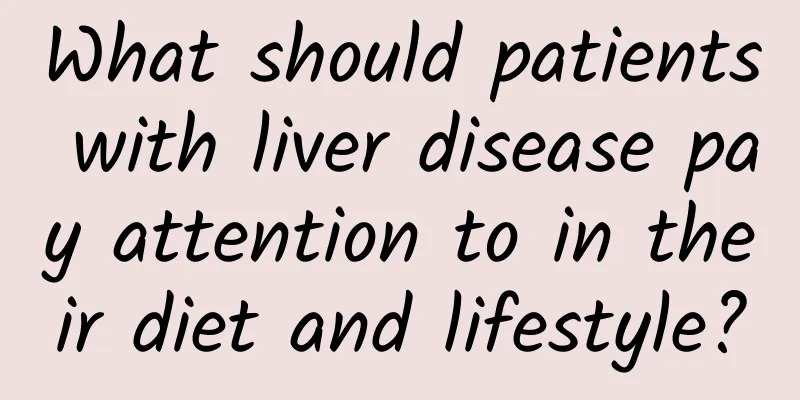Pay attention to atrial fibrillation and prevent stroke

|
Author: Ding Lan, The Second Affiliated Hospital of Nanchang University Reviewer: Yu Jianhua, Chief Physician, Second Affiliated Hospital of Nanchang University With the rapid advancement of medical technology and the significant improvement of living standards, human life expectancy continues to increase. However, this trend is also accompanied by the fact that cardiovascular diseases have gradually become a major challenge facing global public health. Among them, atrial fibrillation (AF), as one of the most common types of arrhythmias, not only has a serious impact on the patient's quality of life, but is also an important independent risk factor for stroke. Therefore, in-depth understanding of the relationship between AF and stroke, and taking scientific and effective preventive measures, is of great significance to improving public health. 1. Atrial fibrillation: a crisis hidden in the heartbeat Atrial fibrillation is a rapid and irregular heartbeat caused by abnormal electrical signal conduction in the atria. Doctors often use the metaphor of "atrial throbbing" to vividly describe the pathological characteristics of atrial fibrillation. This disordered heartbeat not only weakens the heart's pumping function, but also causes blood to form vortices and stagnate in the atria, providing a breeding ground for the formation of blood clots. Figure 1 Copyright image, no permission to reprint Thrombosis, a hidden "silent killer", once quietly formed in the atrium of a patient with atrial fibrillation, is like placing a "time bomb", lurking with great danger. As the blood flows, this "time bomb" may be "detonated" at any time. Once it leaves its original position and travels along the blood vessels, it may eventually block the cerebral blood vessels and cause a stroke. This process is not only rapid and unpredictable, but also poses a huge threat to the patient's life and health. Figure 2 Copyright image, no permission to reprint 2. The fatal link between blood clots and stroke Stroke, also known as apoplexy, is a brain tissue damage disease caused by sudden rupture or blockage of cerebral blood vessels. According to different causes, stroke can be divided into ischemic and hemorrhagic. Among them, the vast majority of strokes caused by atrial fibrillation are ischemic strokes. Figure 3 Copyright image, no permission to reprint Ischemic stroke occurs when blood clots block cerebral blood vessels, resulting in insufficient blood supply to the brain tissue, which then causes necrosis. It may cause a series of serious sequelae such as hemiplegia, aphasia, cognitive impairment, and even endanger the patient's life. Therefore, preventing stroke in patients with atrial fibrillation is of great significance for improving the patient's prognosis and quality of life. 3. Comprehensive prevention strategy for atrial fibrillation and stroke 1. Precision drug treatment to protect heart health As a cornerstone strategy for preventing stroke in patients with atrial fibrillation, the importance of anticoagulant therapy is self-evident. By taking anticoagulants in a standardized manner, the activity of coagulation factors can be effectively inhibited, thereby reducing the risk of thrombosis. However, it should be noted that anticoagulant therapy is not a one-time solution. Under the guidance of a doctor, patients should adjust the dosage of the drug according to their specific circumstances, and follow the doctor's orders to regularly monitor coagulation function to ensure the safety and effectiveness of anticoagulant therapy. Figure 4 Copyright image, no permission to reprint 2. Lifestyle intervention to build a healthy defense line In addition to drug treatment, active lifestyle intervention is also an important strategy for preventing atrial fibrillation and stroke. A balanced diet, that is, reducing the intake of high-fat, high-salt, and high-sugar foods, and increasing the intake of fresh vegetables, fruits, whole grains and other foods rich in fiber, vitamins and minerals, can help reduce the risk of cardiovascular disease. At the same time, regular physical exercise can enhance cardiopulmonary function, promote blood circulation, relieve stress and improve mood. Quitting smoking and limiting alcohol consumption are key measures to reduce the risk factors of cardiovascular disease. In addition, maintaining a positive and optimistic attitude and learning to effectively manage stress are also important parts of maintaining heart health. Figure 5 Copyright image, no permission to reprint 3. Regular physical examinations and screenings for early detection and early treatment Regular physical examinations are an effective way to detect atrial fibrillation and other cardiovascular diseases early. People with chronic diseases such as hypertension, diabetes, and hyperlipidemia should undergo regular electrocardiograms and cardiac ultrasounds to monitor their heart health. These examinations can not only help doctors detect potential heart problems in patients in a timely manner, but also provide important basis for further developing personalized prevention and treatment plans. 4. Actively treat the primary disease and block the disease progression chain Many patients with atrial fibrillation have cardiovascular diseases such as hypertension and coronary heart disease. These diseases are not only the cause of atrial fibrillation, but also important risk factors for stroke. Therefore, actively treating these primary diseases is of great significance for preventing the occurrence of atrial fibrillation and stroke. By controlling blood pressure, improving heart blood supply and other measures, the incidence of atrial fibrillation and the risk of stroke can be reduced. At the same time, for patients with confirmed atrial fibrillation, actively treating the primary disease is also the key to reducing complications and improving the quality of life. Prevention is better than cure. As individuals, our first priority is to improve our lifestyle and stick to healthy living habits. At the same time, we should pay attention to our own health and have regular physical examinations and screenings to promptly detect and effectively respond to potential heart problems. |
<<: The kidney is hidden, there are ways to check it
>>: I don’t want to repeat it! E-cigarettes are really not the “white moonlight” of smokers…
Recommend
Is the ovulation date fixed every month?
Generally speaking, for healthy women, the ovulat...
What are the early signs of pregnancy?
When women are pregnant, they will actually have ...
Is bleeding after taking birth control pills considered menstruation?
Emergency contraception is a kind of medicine use...
As the weather turns cooler, beware of "autumn diarrhea"
In September and October every year, the weather ...
Spring Guardian Guide: How to deal with pollen allergies?
March is supposed to be a good time for everythin...
What is postpartum urethritis?
Women are a relatively special group because thei...
Float: Mobile healthcare has huge potential
There are 320 million mobile phone users and 1.7 ...
Autism introductory challenge, see how much you know?
Do you know these questions about autism? Pay att...
How to make menstruation come earlier
Menstruation is something that girls must go thro...
What are some simple ways to make your breasts bigger?
There are many female friends who love beauty and...
Symptoms of anemia caused by excessive menstruation
We all know that anemia is mainly caused by low b...
Don’t take abdominal discomfort lightly, it might be gastroptosis!
Gastroptosis is a common gastrointestinal disease...
How much Helicobacter pylori is considered normal? How to avoid Helicobacter pylori infection at a dinner party?
Helicobacter pylori (HP) is an indicator for chec...
What to eat to treat dysmenorrhea
Dysmenorrhea usually occurs during menstruation a...
Pregnant woman holding urine and stomach pain
It is best for pregnant women not to hold their u...









